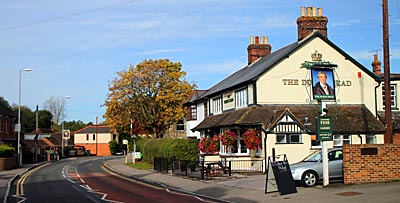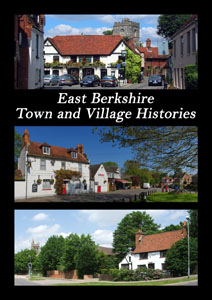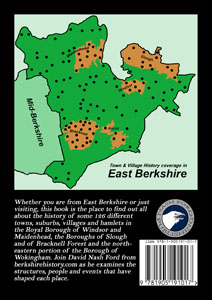 |
 |
||||||||
|
|
Ambarrow is the western side of Sandhurst parish, but it could hardly be called a hamlet. Ambarrow and Edgebarrow Hills are said to be the result of some great battle between the Anglo-Saxons and the Vikings, the dead from each side being buried beneath them. In fact, both are perfectly natural hillocks. The grounds of Ambarrow Court are now an attractive country park, especially when the bluebells are in bloom. The huge old house there was built for Lieutenant-Colonel George Sheppard Harvey in 1885. It was his retirement home after having served his country in the Royal Artillery, particularly in China. The Royal Aircraft Establishment moved in during the Second World War but the place was demolished in 1969. The name Sandhurst is Anglo-Saxon and means Sandy Wooded Hill. It is built on a small eminence overlooking the River Blackwater. There was a royal hunting lodge there at the centre of Sandhurst Walke, an important sub-division of Windsor Forest. Hart’s Leap Road is thought, by some, to be the site and marks the very edge of the Forest. King George III is said to have been its last royal visitor. Centuries earlier, Prince Arthur, elder brother of Henry VIII, crossed the Blackwater, at the same spot on his way to meet his future bride, Princess Catherine of Aragon, at Dogmersfield Park near Fleet in Hampshire. The manor house of Sandhurst is in the Ambarrow area. It is called Sandhurst Lodge and stands on the edge of the parish some way from the usual position adjoining the church. It may contain remnants of a late 18th century house built by and for Richard Heaviside, the associate of the architect, John Nash. However, the place was almost entirely rebuilt for Robert Gibson in 1858, in a rather unexceptional Italianate style. It was later the country home of the well-known London solicitor, Sir William Farrer. He married one of the Shaw-Lefevres from Heckfield, over the border in Hampshire, and the couple laid out a famous garden in the grounds with large heated ponds of exotic water-lilies. They took a great interest in village life and are commemorated by a fine Greek revival monument in the parish church. The Church of St Michael and All Angels was originally a chapel-of-ease to the mother church at Sonning. The present building, with its Surrey-style spire, dates almost entirely from a rebuilding of 1853. The main doorway is imitation Norman but may be a replica of one in the old church. The font is a remarkable object carved by the rector’s daughter, Jane Monkton Jones, and inspired by the beautiful Norman fonts of Herefordshire. There are a few interesting old relics inside too, including an ancient brass to Richard Geale and his wife (1608). The Geales were a prominent Sandhurst and Yateley family. In the mid-18th century, they owned the Rose and Crown, the oldest of the seven surviving pubs in the village. In the 1850s, two of the pubs were still run by members of what was by then the Giles family, local farmers who apparently liked to retire into licensed trade. However, one George Giles was arrested in 1858 after he got drunk at the Wellington Arms in Sandhurst and, apparently unprovoked, stabbed his friend outside in the road. The victim only survived because Giles hit his rib. There are two pubs named after the Duke of Wellington in the village and there is another in Crowthorne (there were once a total of three in Crowthorne). Crowthorne was part of the parish of Sandhurst until 1874 and the Duke’s greatest memorial, Wellington College, was built there in 1812. He lived not far away at Stratfield Saye House, in Hampshire, and the estate stretches into Riseley. The army moved the Junior Division of the Royal Military College to its current site in Sanhurst from Marlow during the Napoleonic Wars, in 1813. This was joined by the Senior Division from High Wycombe in 1858. In 1946, these were merged with the Royal Military Academy from Woolwich to become the Royal Military Academy, Sandhurst. The main ‘Old College’ building, by John Sanders, is imposing but austere. The vast plain two-storeyed frontage stretches the length of the parade ground, broken only by a six-columned classical portico. Read more history of
Sandhurst and other settlements in the parish in David Nash Ford's book, 'East Berkshire Town and Village
Histories'.
|
||||||||
| © Nash Ford Publishing 2001. All Rights Reserved. | |||||||||



 Sandhurst
Sandhurst
